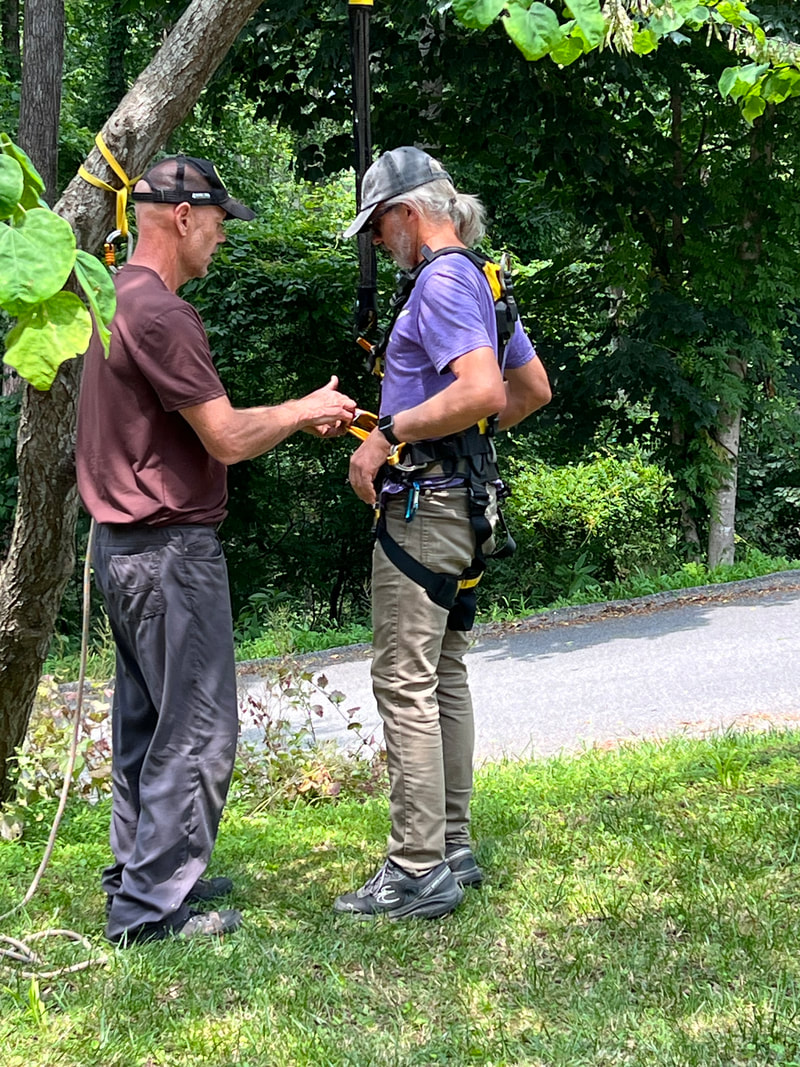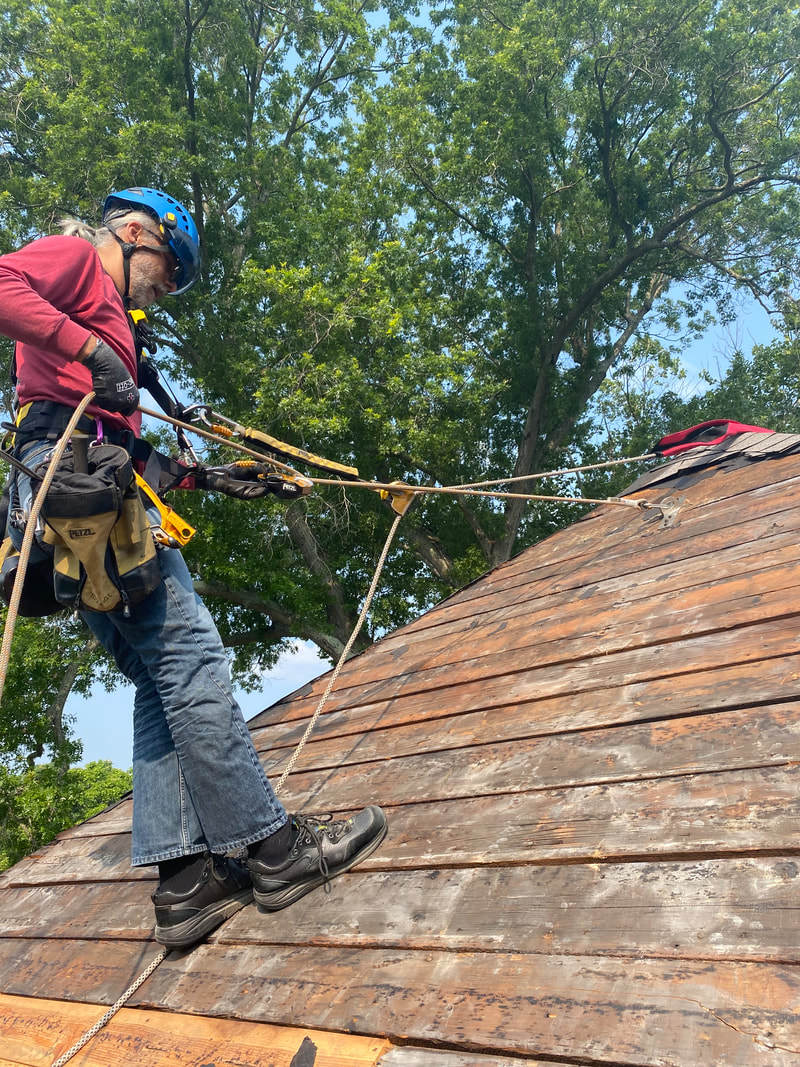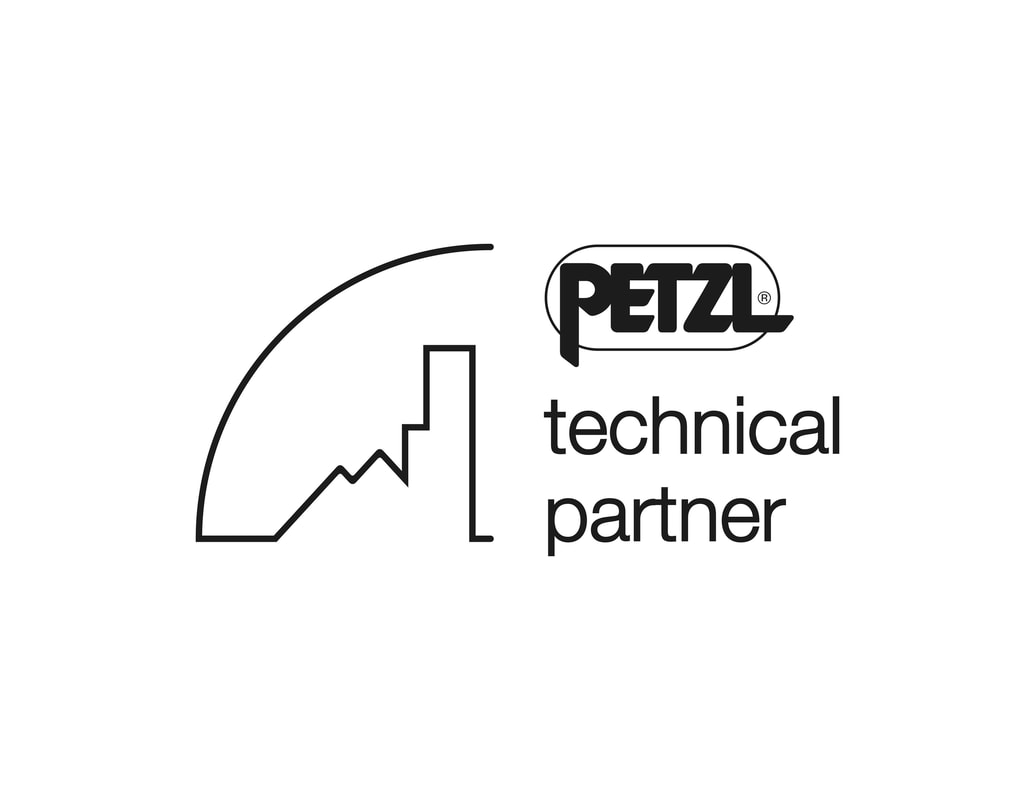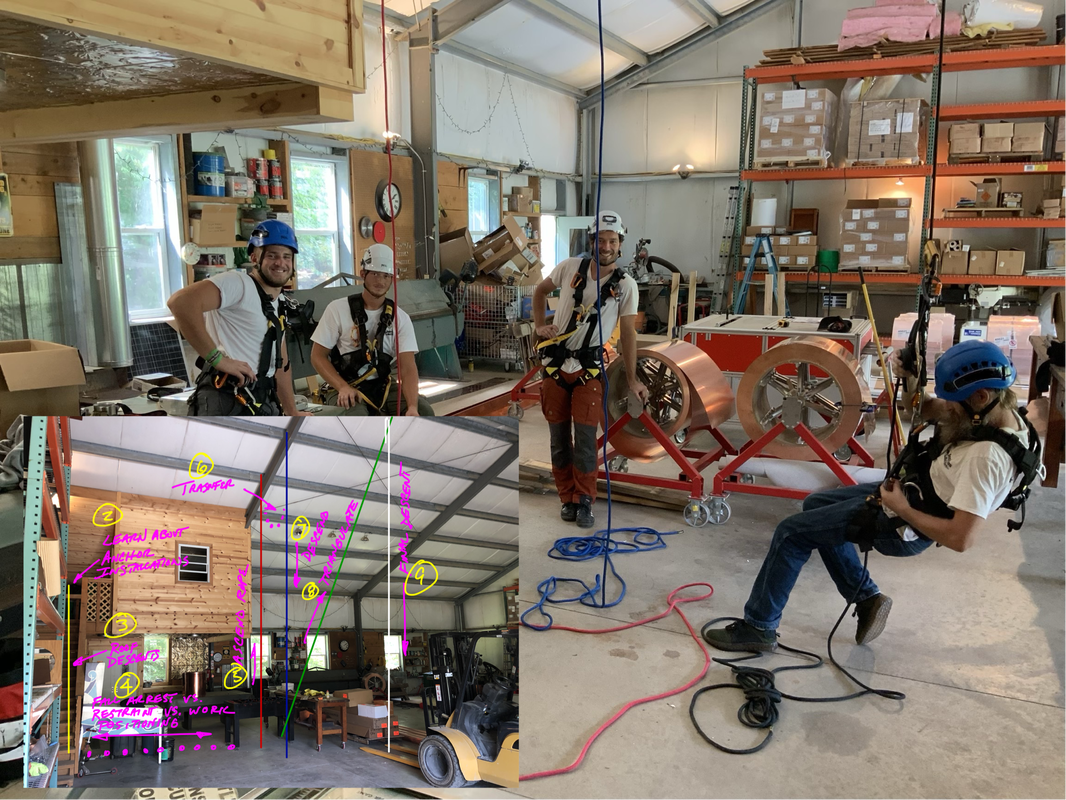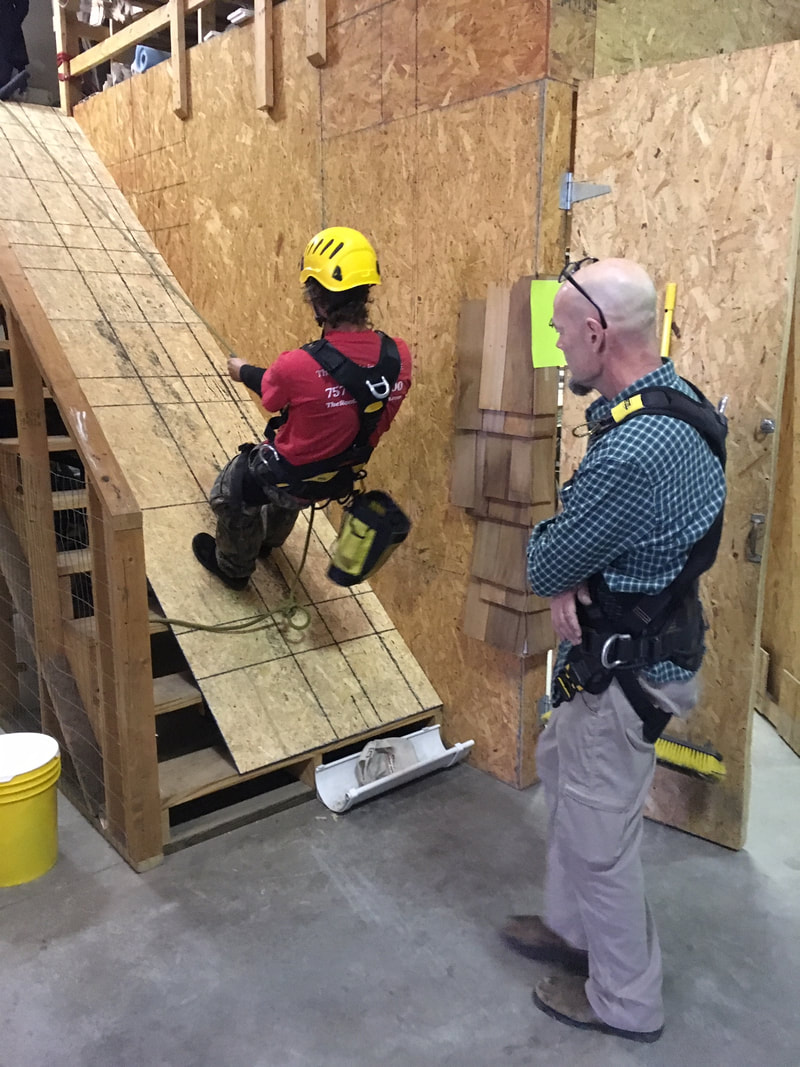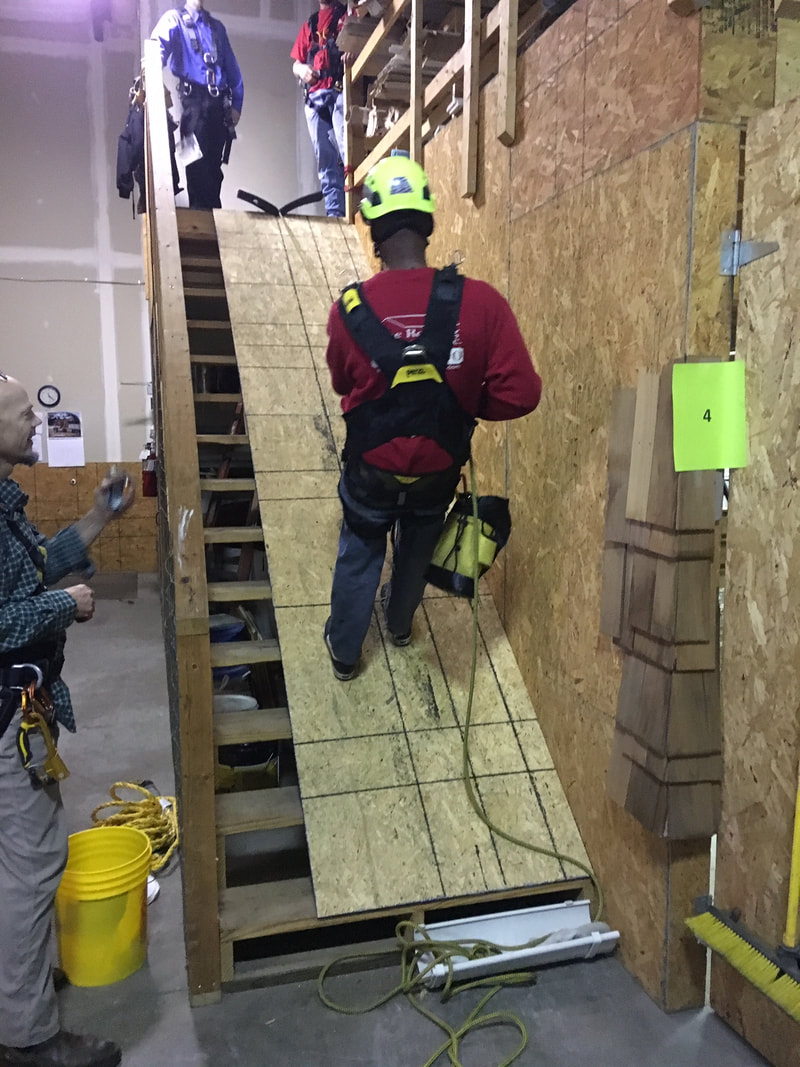Real-World Training Develops Problem Solving Skills.
This real-world training session consisted of 3 hours of on-the-ground training on Day 1. Based off of the client's background and goals, we zero'd in on ANSI standards, rope and connector selection, load-limiting lanyards and harness ring use. Then we proceeded to a brief suspension from dorsal ring, sternal ring, work positioning rings and then from the pelvic ring. This helped the client experience discomfort, distress and an understanding of what may quickly become a fatal suspension. We followed this with a few vertical rope ascensions and then set up a real life practice scenario. The client practiced for an hour, repeating this scenario training session to develop gear familiarity, muscle memory and questions. Overnight homework: knot-tying. Day 2: Apply the knowledge as we roof together safely.
EMPLOYERS:
Lack of documentation of training is one of the most frequently written OSHA citations. We like to use a photo of each training session in the documentation to help everyone see, understand, and remember what actually occurred on training day. We also believe roofers benefit much more from hands-on learning instead of Powerpoint presentations.
Does your roofing, chimney or solar company have a mock roof or a place to train on snowy or rainy days. The photos below were taken at client's offices or warehouses. The owners of these businesses are true leaders in the industry. They never waste a moment that they can use to advance the safety or skill levels of their crews.
Is your company ready to:
- Try new gear and solutions for old problems.
- Reduce risk.
- Develop Safe Access Plans.
- Reduce injuries/fatalities.
- Reduce insurance premiums.
- Reduce potential fines.
- Improve employee retention and morale.
- Increase job opportunities and referral rates.
ACCIDENT: an unforeseen and unplanned event or circumstance
resulting especially from carelessness or ignorance.
resulting especially from carelessness or ignorance.
We believe nearly every accident is avoidable with proper planning.
As roofers/remodelers ourselves we also believe the best use of a rainy day, is training.
Our philosophy is that if we cannot do it safely, then we have not yet properly prepared.
Our safe access techniques and safety systems are simple, easy to learn, and once practiced and naturally implemented,
allow the worker to focus completely on doing quality work.
Train properly. Then, Trust your gear. Trust your crew. Trust your Training.
As roofers/remodelers ourselves we also believe the best use of a rainy day, is training.
Our philosophy is that if we cannot do it safely, then we have not yet properly prepared.
Our safe access techniques and safety systems are simple, easy to learn, and once practiced and naturally implemented,
allow the worker to focus completely on doing quality work.
Train properly. Then, Trust your gear. Trust your crew. Trust your Training.
Typical conversations often explore some of the following topics:
- Evaluating Safe Access and Rescue Plans
- Building your team with our Roof Safety Level program
- Safe Ladder Securing Techniques
- Anchor Placements and Planning Your Fall
- Locating Roof Rafters
- Installation of the SLATOR
- Sling Techniques for Steep Roofs
- Working "Over" the Ridge
- Safely Completing Ridge Work
- Utilization of Mobile Fall Arrestors
- Choosing a Harness
- Suspension in Your Harness and Suspension Trauma
- Sternal vs. Dorsal Rings
- Basic Slate Repair
- Group Problem Solving for Specific Roofs
- Safe techniques for working long rakes
- Installation and use of our V-1 temporary or the V-5 permanent anchor.
